
Custom Size Plushie Doll Custom Cartoon Plush Dolls Personal Design Manufacturer Custom Stuffed Dolls For Kids Baby Children





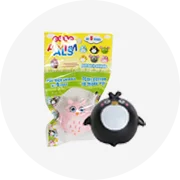

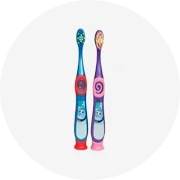
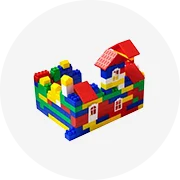
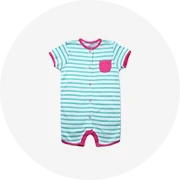

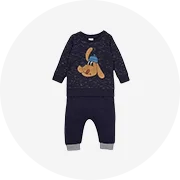


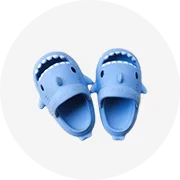



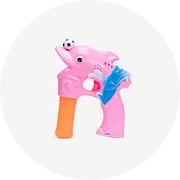
In a world where the lines between play and therapy increasingly blur, life-size child dolls emerge as powerful tools in educational and therapeutic landscapes. These dolls, far from mere playthings, are ingeniously crafted to serve as bridges between caregivers and those in their charge, facilitating communication, emotional expression, and skill development. With their roots in play therapy, a technique pioneered in the early 20th century, these dolls have evolved to embody complex emotions and assist in a range of professional settings—from medical training to psychological healing. This article delves into the transformative potential of life-size child dolls, exploring their design, application, and the profound impact they can have on individuals across various stages of life.
The concept of play therapy, a technique where children use play to express their emotions and thoughts, has been around since the early 20th century, with notable contributions from pioneers in the field. The therapeutic community recognizes the value of play in helping not just children but also adults to communicate their inner experiences. Traditional toys have often been employed in this context, but there is a growing recognition of the need for specialized tools to facilitate this process.
Enter the realm of life-size child dolls, designed specifically for play therapy. These dolls serve as a medium for patients to project their feelings and stories, thus aiding therapists in understanding and addressing their emotional states.
The design of these dolls, which contrasts the hardness of the wood with the softness of the flexible parts, not only generates interest but also symbolizes the balance between positive and negative emotions. This abstract approach to representing feelings allows for a more open-ended form of expression, which is particularly beneficial in therapeutic settings where children or adults may struggle to articulate their emotions through words.
Alibaba.com showcases a variety of life-size child dolls designed for educational and therapeutic purposes. Among these, the Nursing training practice models stand out as multifunctional tools for medical students, offering realistic scenarios for practice. These dolls are equipped with features for gastrolavage, suction, tracheotomy, and intubation training, making them invaluable in medical teaching environments.
For those in the field of early childhood education and therapy, dolls with music and light functions provide sensory stimulation that can be both comforting and educational. The cross-border early childhood education comfort dolls are also notable for their ability to offer solace and learning experiences through their interactive features.
In therapeutic settings, life-size child dolls serve as advanced tools for pediatric endotracheal intubation training. These dolls are crafted to mimic human anatomy accurately, providing a high degree of realism for medical professionals honing their skills. Additionally, the acupuncture dolls serve as life-size models for students and practitioners to learn and perfect the art of acupuncture.
The range of dolls extends to include models that aid in stress relief and decompression, such as the Electric Plush Toy Anti Stress Punch Me Toy and the Venting Stress Desktop Punching Bag. These dolls are designed to provide a humorous and tactile outlet for stress, beneficial in both adult and child therapeutic contexts.
In the realm of child development and therapy, life-size child dolls have found a significant place, particularly in scenarios mirroring those of children with behavioral challenges. These dolls serve as therapeutic tools in Play Therapy, a technique where children express their emotions and experiences in a safe, play-based environment. Therapists utilize such dolls to facilitate communication, allowing children to project feelings and practice social skills in a controlled setting. The dolls' use extends beyond therapy into educational contexts, where they can act as stand-ins for real children, helping students in fields like pediatric healthcare to practice medical procedures or caregiving tasks. This hands-on approach with life-size dolls enhances learning by providing realistic scenarios, fostering empathy, and improving practical skills in future professionals.
Life-size child dolls, offer a unique blend of therapeutic benefits and educational value. These dolls are crafted to facilitate emotional processing and expression in children, particularly during play therapy. A key feature of high-quality dolls in this category is their ability to serve as a psychological tool, enabling children to project their feelings and experiences onto the toys. The design of these dolls is intentionally abstract, allowing for a wide range of emotional interpretation, which can be pivotal in a child's therapy.
Materials used in the construction of these dolls are carefully chosen for their tactile qualities and safety. Polished wood provides a warm and gentle touch, while the incorporation of silicone inlays introduces playful colors and textures. This contrast in materials is not just aesthetically pleasing but also serves a therapeutic purpose, helping children to understand and accept the complexity of their emotions. The dolls' weight and flexibility are considered to convey different emotions, such as the stability and comfort suggested by the design.
Moreover, the dolls are designed to be engaging, ensuring that they hold the child's interest during therapeutic sessions. The thoughtful design and material choice are what set these life-size child dolls apart, making them a valuable asset in both educational and therapeutic settings.
When considering the construction of life-size child dolls, particularly those used for educational and therapeutic purposes, safety and durability are paramount. The materials used in these dolls must adhere to stringent safety standards to ensure they do not pose any harm to children. For instance, comprehensive safety standards cover various aspects of toy safety, including those applicable to dolls. These standards set forth requirements for the physical and mechanical properties of toys, ensuring that they are free from sharp points or edges that could cause injury.
Furthermore, these safety standards include specific clauses for the use of certain materials, such as the limits on heavy metals and chemicals that could be hazardous if ingested or inhaled. This is crucial for life-size child dolls as they may be used in close contact with children who are prone to putting objects in their mouths. The standards also address the flammability of materials used in toys, which is an essential consideration for the safety of life-size dolls made from fabrics or other flammable substances.
In addition to federal standards, manufacturers must also consider regulations which mandate that all children’s products must not contain more than a specified ppm of total lead content in substrates. This regulation ensures that the materials used in the construction of life-size child dolls are not only durable but also non-toxic, contributing to the overall safety and longevity of the product.
Therapy dolls, particularly life-size child dolls, have been recognized for their therapeutic benefits in professional settings such as care homes and clinics. These dolls serve as a non-pharmaceutical intervention that can significantly alleviate symptoms for individuals with conditions like dementia or Alzheimer's. The tactile and emotional engagement with a life-size child doll can offer comfort and emotional support, helping to soothe agitation and reduce behavioral issues. Moreover, the dolls can instill a sense of purpose and bring back pleasant memories of parenthood, which can be particularly comforting for patients. By providing a focus for daily care routines, these dolls help to lessen feelings of loneliness and social isolation, which are common in patients suffering from cognitive impairments. The use of life-size child dolls in a therapeutic context underscores the importance of non-verbal communication and the power of nurturing behaviors in promoting mental well-being and quality of life for patients.
Our platform offers a wide array of customization options for life-size child dolls, catering to diverse needs in educational and therapeutic settings. Customers can collaborate with manufacturers to create dolls that resemble specific individuals, which can be particularly impactful in therapy or educational environments. These custom dolls can be tailored in terms of appearance, including clothing and hair, to match the intended use or to resonate more personally with the user.
The platform also provides options for various types of dolls, such as those used for medical training or as instructional aids in classrooms. The dolls can be designed with different expressions and postures to suit the scenario in which they will be used. For instance, dolls with neutral expressions might be preferred in certain therapeutic contexts, while those with more animated features could be beneficial in interactive learning situations.
In addition to aesthetic customization, there is also the possibility to adjust the materials used, ensuring that the dolls are safe and durable. This is particularly important for dolls intended for frequent use in professional settings. The customization process is designed to meet the specific requirements of each buyer, ensuring that the final product is a suitable match for the intended educational or therapeutic purpose.
The integration of life-size child dolls into professional settings has marked a significant advancement in the fields of education and therapy. These dolls, transcending their initial plaything status, have become indispensable in simulating real-life scenarios for medical students, providing comfort in therapeutic settings, and aiding in the treatment of cognitive conditions like dementia. The dolls are not just tools but catalysts for emotional expression and learning, designed with a keen understanding of psychological needs and material safety. The customization options available further enhance their utility, allowing for tailored solutions that resonate on a personal level with users. As we have seen, the benefits of employing these dolls are manifold, offering a non-pharmaceutical, compassionate approach to care and education that enriches the lives of all involved. In essence, life-size child dolls stand as a testament to the power of innovative design and empathy in fostering human connection and well-being.